In late 1971, NASA was preparing to fly its last two Apollo Moon landing missions the following year, with an emphasis on conducting as much science as possible. The Apollo 16 crew of Commander John W. Young, Command Module Pilot (CMP) Thomas K. Mattingly, and Lunar Module Pilot (LMP) Charles M. Duke and their backups Fred W. Haise, Stuart A. Roosa, and Edgar D. Mitchell were training for their 12-day mission in March 1972 to the Descartes landing site in the lunar highlands. The recently announced Apollo 17 crew of Commander Eugene A. “Gene” Cernan, CMP Ronald E. Evans, and LMP Harrison H. “Jack” Schmitt, a trained geologist, were in the initial stages of their training, awaiting a formal decision on the landing site for their December 1972 mission. As America’s first lunar landing program was beginning to wind down, preparations were underway for its first space station program, Skylab.
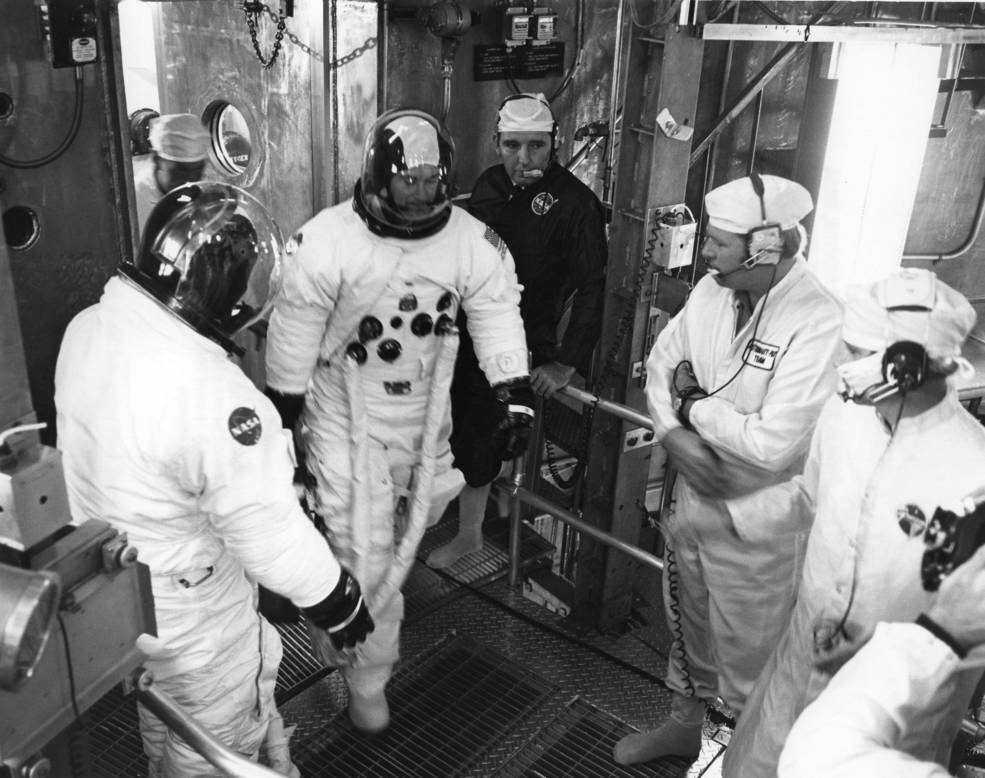
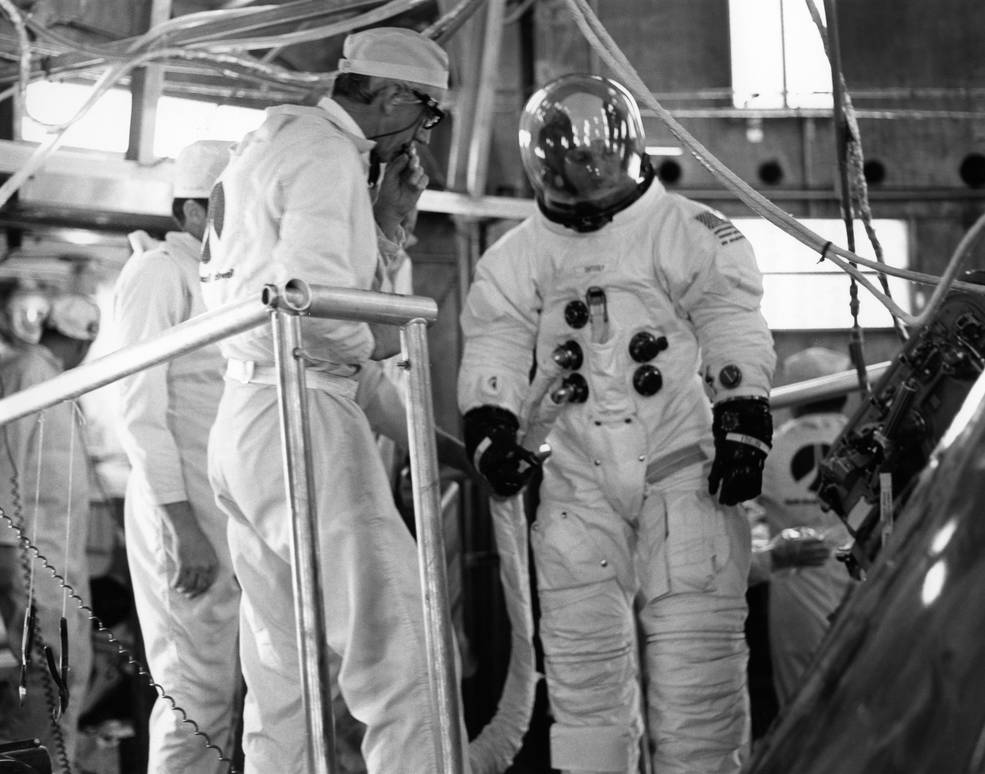
Left: Apollo 16 astronauts John W. Young, left, and Charles M. Duke arrive in a vacuum chamber
in the Manned Spacecraft Operations Building at NASA’s Kennedy Space Center in Florida to
conduct an altitude test of their Lunar Module. Right: Apollo 16 astronaut Thomas K. Mattingly
about to enter the Command Module with Young and Duke to conduct an altitude test.
Part of the preparations for the mission included testing of the spacecraft that would take the astronauts to the Moon and return them safely to the Earth. In vacuum chambers in the Manned Spacecraft Operations Building (MSOB) at NASA’s Kennedy Space Center (KSC) in Florida, the Apollo 16 crew conducted altitude tests of its spacecraft to verify their space worthiness. After simulated altitude runs in early October, Young and Duke conducted vacuum tests of their Lunar Module (LM) on Oct. 15, followed by Haise and Mitchell four days later. On Oct. 20, Young, Mattingly, and Duke successfully completed the altitude test of their Command Module, followed two days later by Haise, Roosa, and Mitchell.
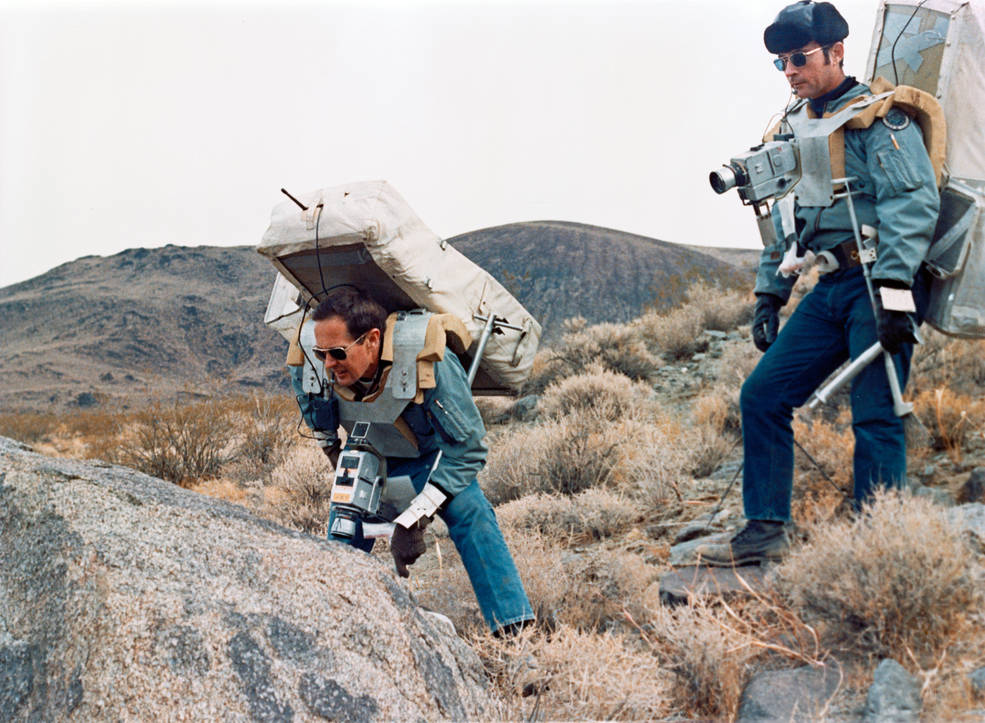
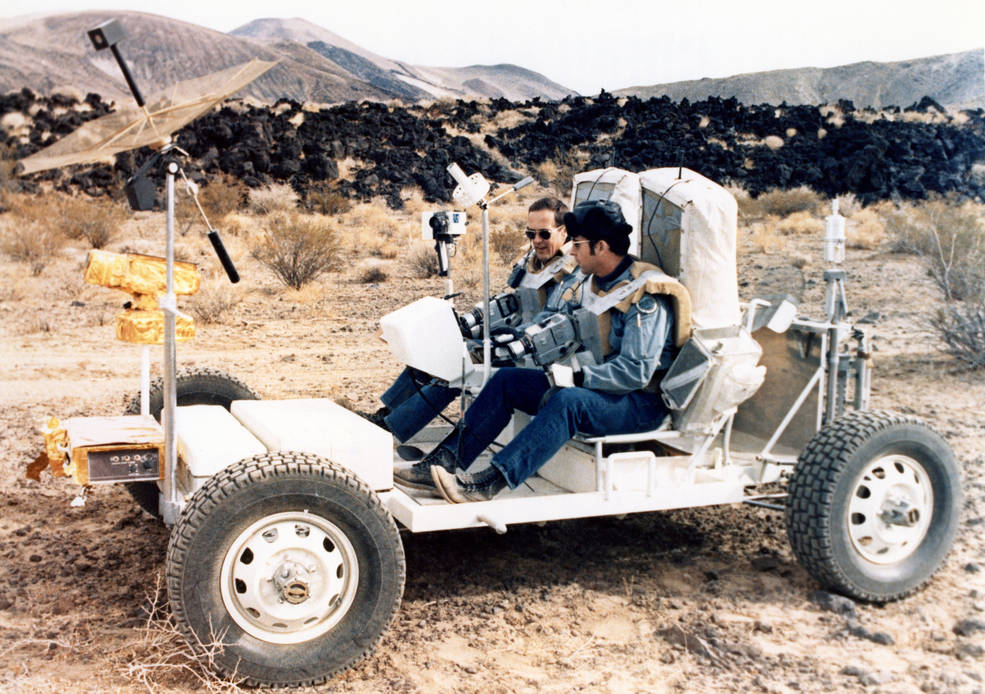
Left: Apollo 16 astronauts Charles M. Duke, left, and John W. Young examine a rock outcrop
during the November 1971 geology field trip to the Coso Hills in California. Right: Duke,
left, and Young ride in the GROVER, a ground-based trainer for the Lunar Roving
Vehicle, in the Coso Hills.
The last two Apollo missions, like the July-August 1971 flight of Apollo 15, emphasized science as a primary objective, using the additional capabilities of three-day stays on the lunar surface and the Lunar Roving Vehicle (LRV) to enable the astronauts to traverse greater distances to explore areas of geologic interest near their landing sites. As part of their geology training, Young and Duke, along with their backups Haise and Mitchell, conducted monthly field trips to geologically interesting sites around the United States. They simulated the planned lunar traverses using a ground-based version of the LRV called the GROVER, or Geologic Rover built by the U.S. Geologic Survey. On Oct. 27-28, they studied craters formed by nuclear explosions at the Atomic Energy Commission’s Nevada Test Site. The next month, on Nov. 17-18, they explored volcanic terrain in the Coso Hills of California, with Apollo 17 astronauts Cernan and Schmitt observing the traverses in preparation for their subsequent geology training. Mattingly and his backup Roosa practiced the orbital geology they would conduct from lunar orbit to complement the surface studies by flying over geologically interesting terrain, first at high altitude in T-38 Talon training aircraft followed by low altitude passes in light planes for a different perspective. Mattingly conducted such flights on Oct. 14-15 over Northern California and Oregon.
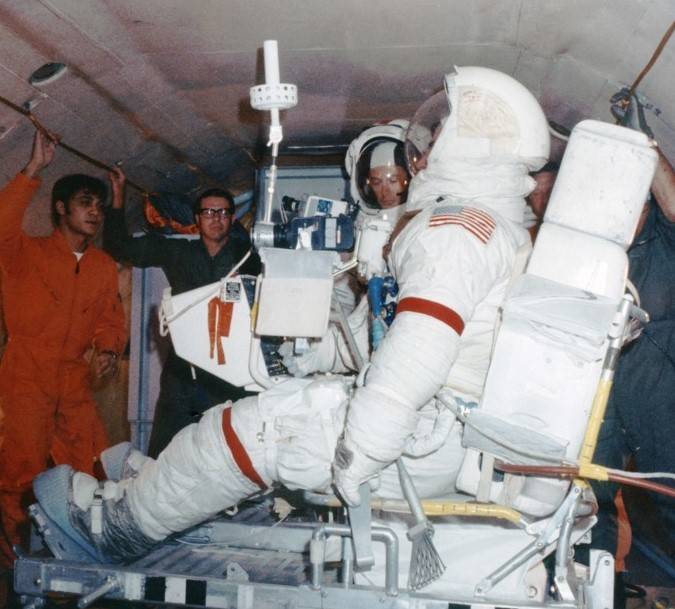
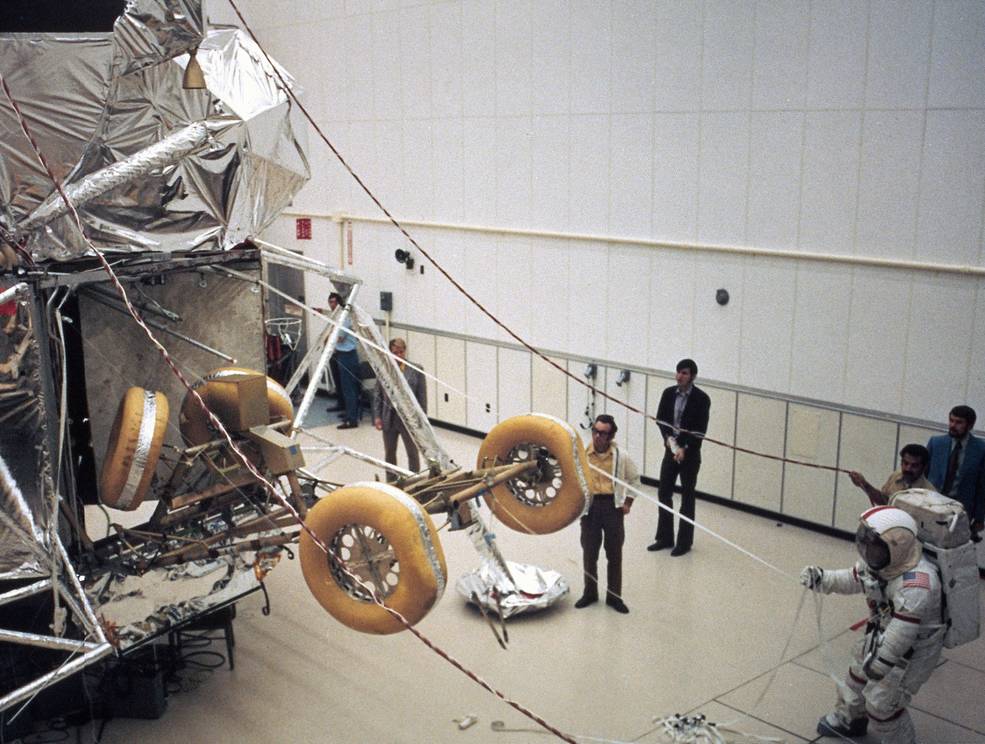
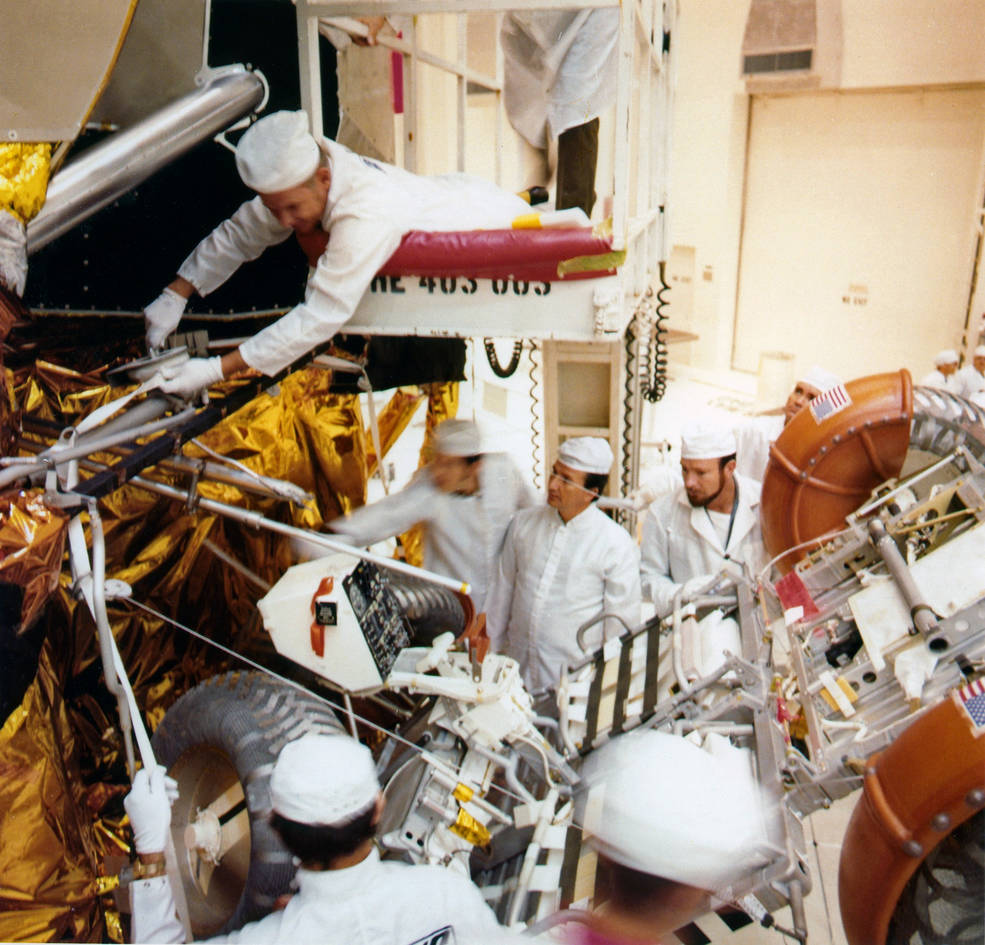
Left: Apollo 16 astronauts Charles M. Duke, left, and John W. Young practicing getting in and out of a Lunar Roving
Vehicle (LRV) trainer in simulated lunar gravity aboard the KC-135 training aircraft. Middle: Using mockups,
Young practices deploying the LRV from the Lunar Module (LM) at NASA’s Kennedy Space Center (KSC) in
Florida. Right: At KSC, engineers preform a fit check with the flight versions of the LRV and the LM as
Apollo 16 backup astronauts Edgar D. Mitchell and Fred W. Haise look on.
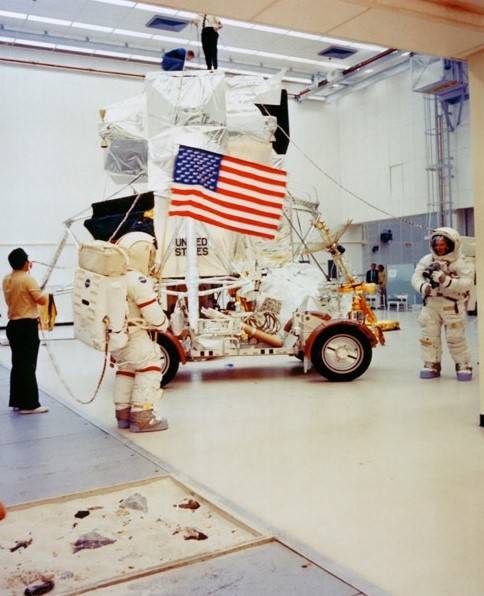
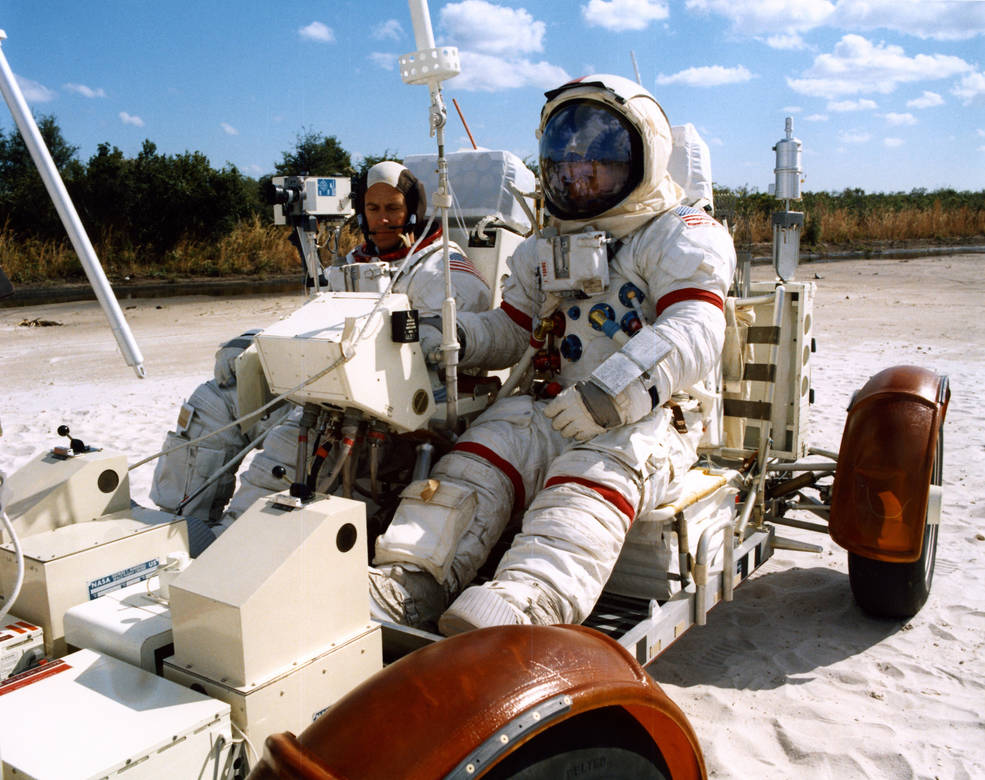
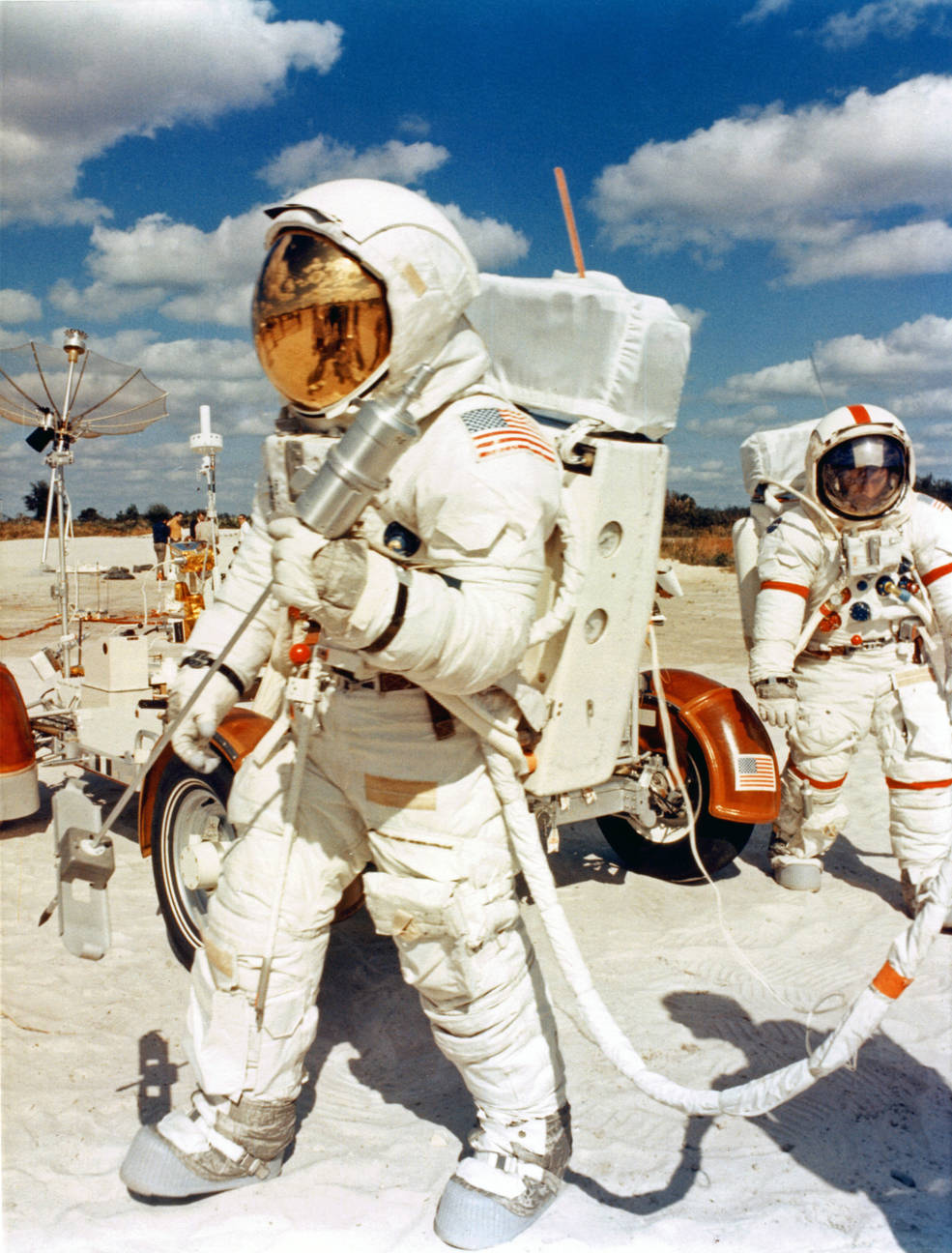
Left: Apollo 16 astronauts John W. Young, left, and Charles M. Duke train for their lunar surface spacewalk,
including deploying the American flag, at NASA’s Kennedy Space Center. Middle: Duke, left, and Young
practice driving the Lunar Roving Vehicle on KSC’s simulated lunar surface. Right: Duke, left, and
Young practice deploying the scientific instruments.
A significant portion of the astronauts’ training involved the three planned lunar surface traverses and the deployment and use of the LRV. During these exercises, the astronauts used a ground-based training version of the LRV and mockups of the experiments and other hardware. The Boeing Company delivered Rover 2, the flight LRV for Apollo 16, to KSC’s MSOB on Sept. 1, where engineers completed preflight checks. The astronauts, wearing their spacesuits, conducted fit checks with Rover 2 on Nov. 2-3. Ground crews installed it on the LM two weeks later.
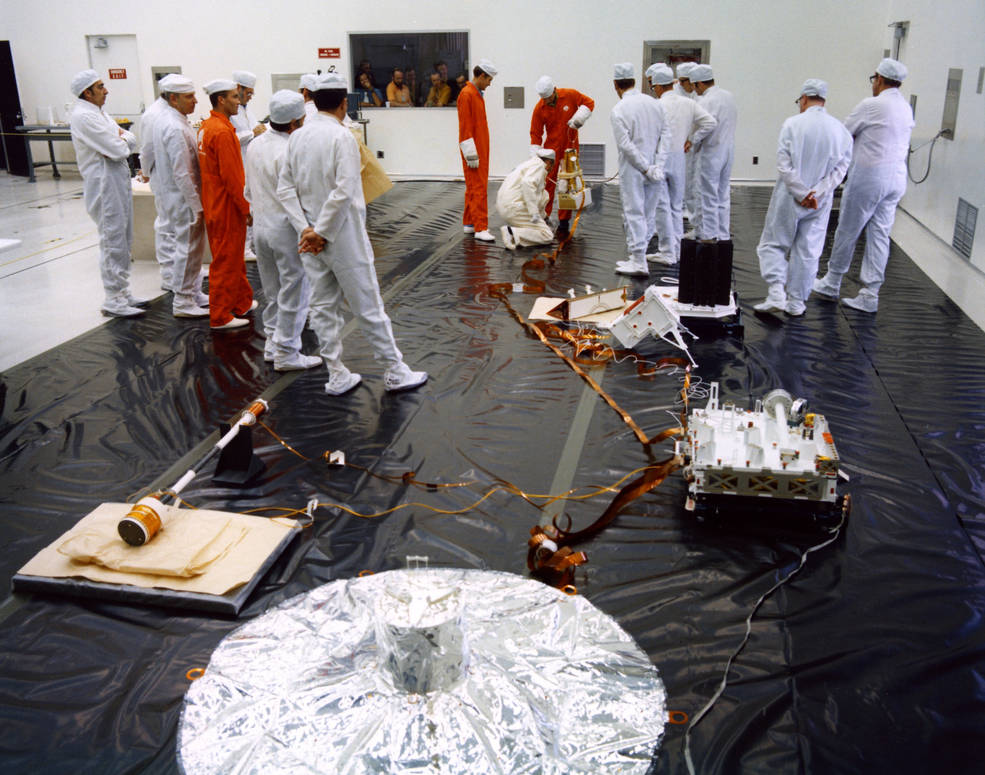
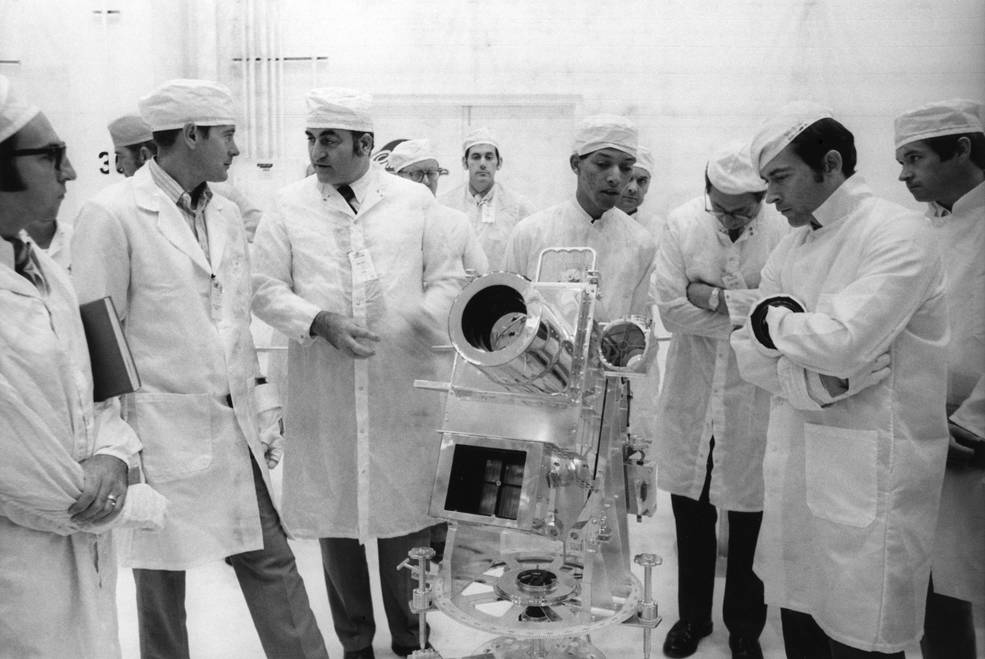
Left: Technicians observe as Apollo 16 astronauts practice deploying the instruments of the Apollo
Lunar Surface Experiment Package. Right: In the Manned Spacecraft Operations Building at NASA’s
Kennedy Space Center in Florida, Apollo 16 astronauts Charles M. Duke, far left, and John W. Young,
far right, listen as Principal Investigator George R. Carruthers, center, describes the far ultraviolet
camera and spectrograph they will deploy as the first observatory on the lunar surface.
The astronauts rehearsed the deployment of the Apollo Lunar Surface Experiment Package (ALSEP), four scientific instruments designed to return data from the Moon for months after the astronauts depart. They practiced the deployment during several suited spacewalk training sessions using mockups of the instruments, and on Nov. 23, they rehearsed with the actual flight units before ground crews packed them aboard the LM in preparation for flight. In addition to the ALSEP experiments, Young and Duke planned to deploy a far ultraviolet camera and spectrograph, the first observatory set up on the Moon, designed by its principal investigator George R. Carruthers of the Naval Research Laboratory in Washington, D.C.
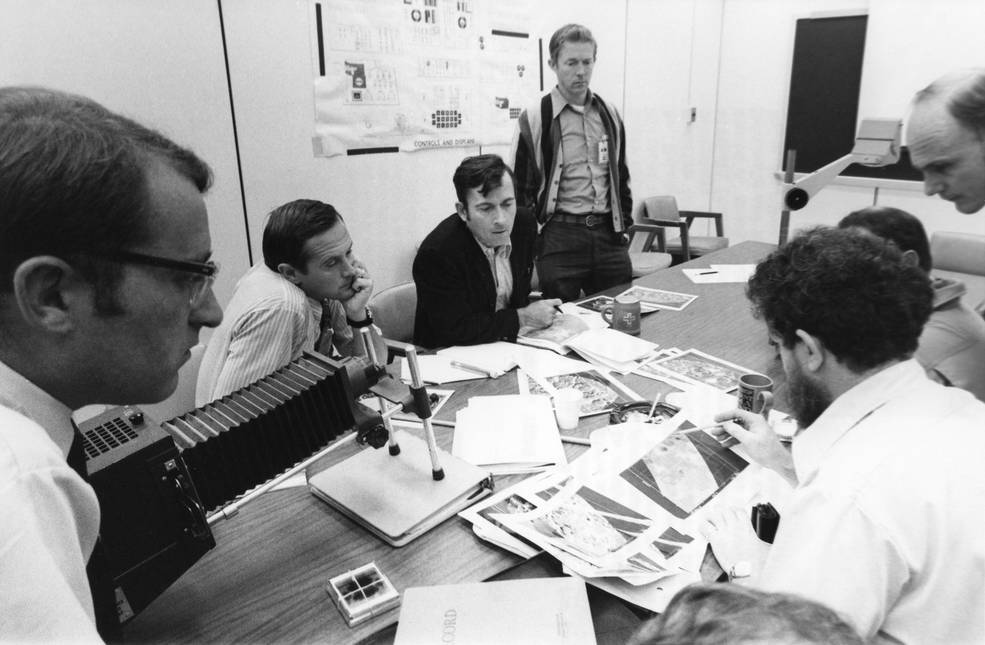
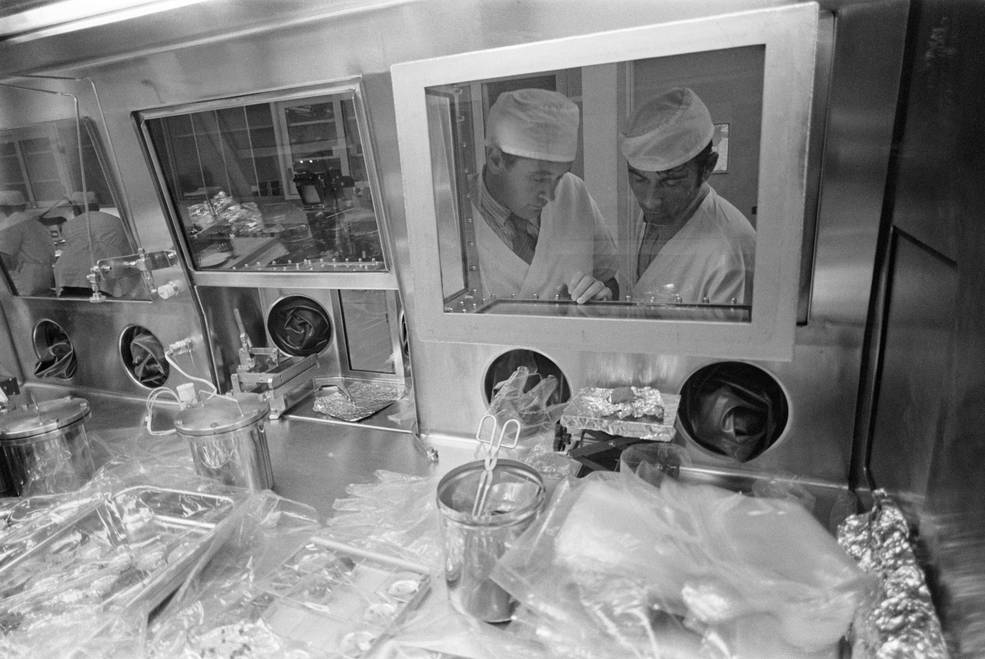
Left: Apollo 16 astronauts Charles M. Duke, left, John W. Young, Stuart A. Roosa, Edgar D. Mitchell
(partially obscured), and Thomas K. Mattingly receive a briefing from NASA geologists. Right: In the
Lunar Receiving Laboratory at the Manned Spacecraft Center, now NASA’s Johnson Space Center in
Houston, Duke, left, and Young examine Moon rocks returned by the Apollo 15 crew.
In addition to learning geology during the field trips to rehearse the lunar traverses, the Apollo 16 astronauts received hundreds of hours of lectures and briefings by geologists, including examination of lunar photographs taken by Lunar Orbiter robotic spacecraft and earlier Apollo missions. On Nov. 29, 1971, Young and Duke received “hands on” experience, through a glovebox in the Lunar Receiving Laboratory in Building 37 of the Manned Spacecraft Center (MSC), now NASA’s Johnson Space Center in Houston, by examining samples returned by the Apollo 15 astronauts.
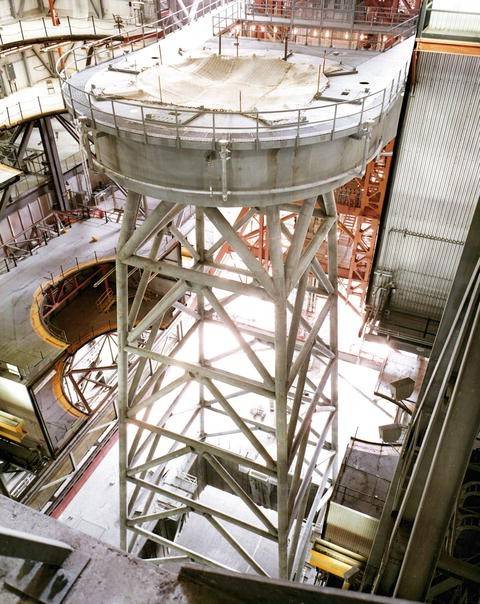
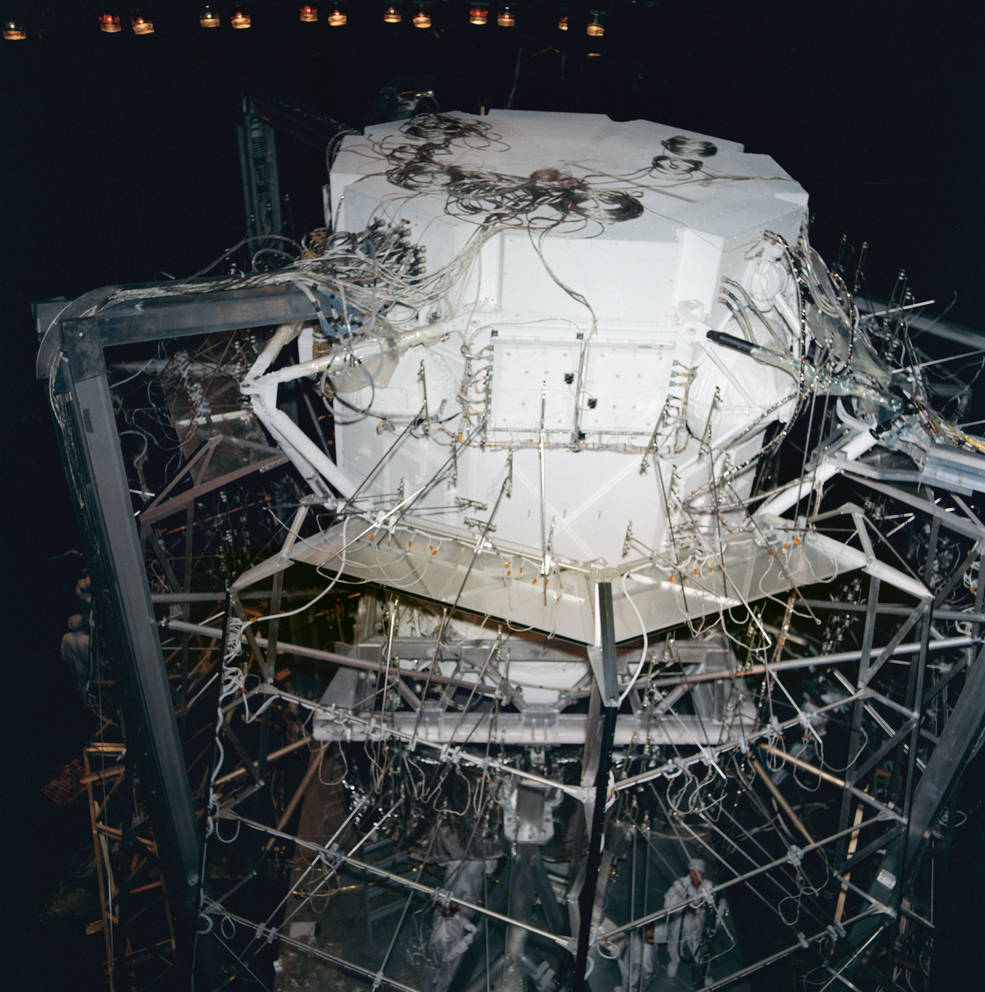
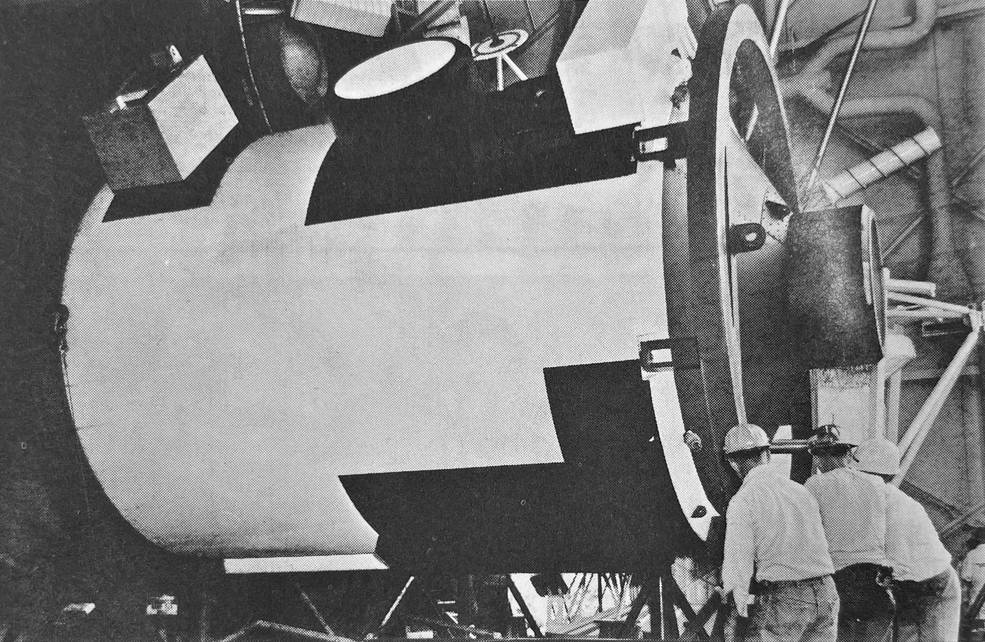
Left: in the Vehicle Assembly Building at NASA’s Kennedy Space Center in Florida, workers construct the pedestal
or “milkstool” used to launch the Saturn IB rockets from Launch Pad 39B during the Skylab Program.
Middle: A prototype of the Skylab Apollo Telescope Mount is placed in Chamber A of the Space
Environment Simulation Laboratory in Building 32 at the Manned Spacecraft Center (MSC), now
NASA’s Johnson Space Center in Houston. Right: A training model of the Skylab Multiple
Docking Adapter arriving in MSC’s Building 5, the Mission Simulation and
Training Facility.
As NASA prepared to conclude the Apollo lunar landing missions, the agency’s preparations for the next phase of human spaceflight – the Skylab space station, planned for launch in 1973 – were well underway. In KSC’s Vehicle Assembly Building, workers constructed the pedestal, also known as the “milkstool,” to be used to launch the crews on Saturn IB rockets from Launch Pad 39B. A decision in 1970 to close Launch Complexes 34 and 37 and use Launch Complex 39 instead necessitated the pedestal to launch the shorter Saturn IB rockets from a pad and umbilical tower designed for the larger Saturn V. Engineers conducted thermo-vacuum testing of components of the Skylab space station, such as the flight backup for the Apollo Telescope Mount (ATM) beginning in October 1971, in the large Chamber A of the Space Environment Simulation Laboratory (SESL) in MSC’s Building 32. Engineers later tested the flight ATM in the SESL in May 1972. To train future Skylab astronauts, in October 1971, workers installed training versions of the Skylab space station’s components in MSC’s Building 5, the Mission Simulation and Training Facility.
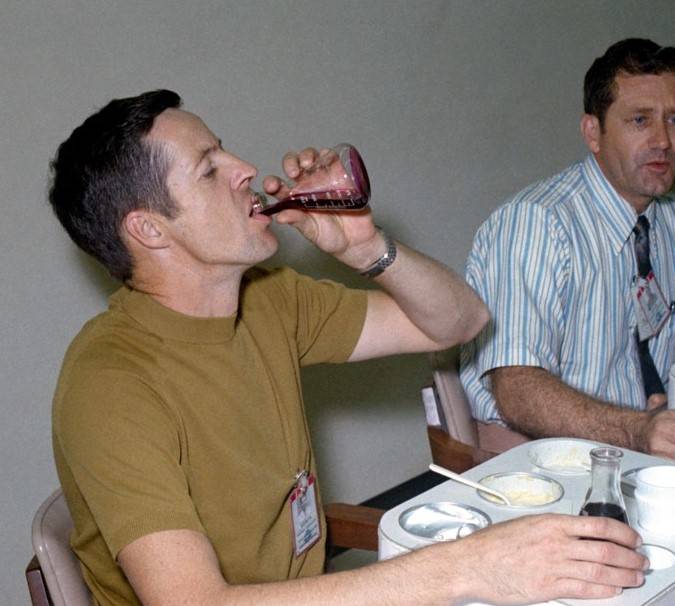
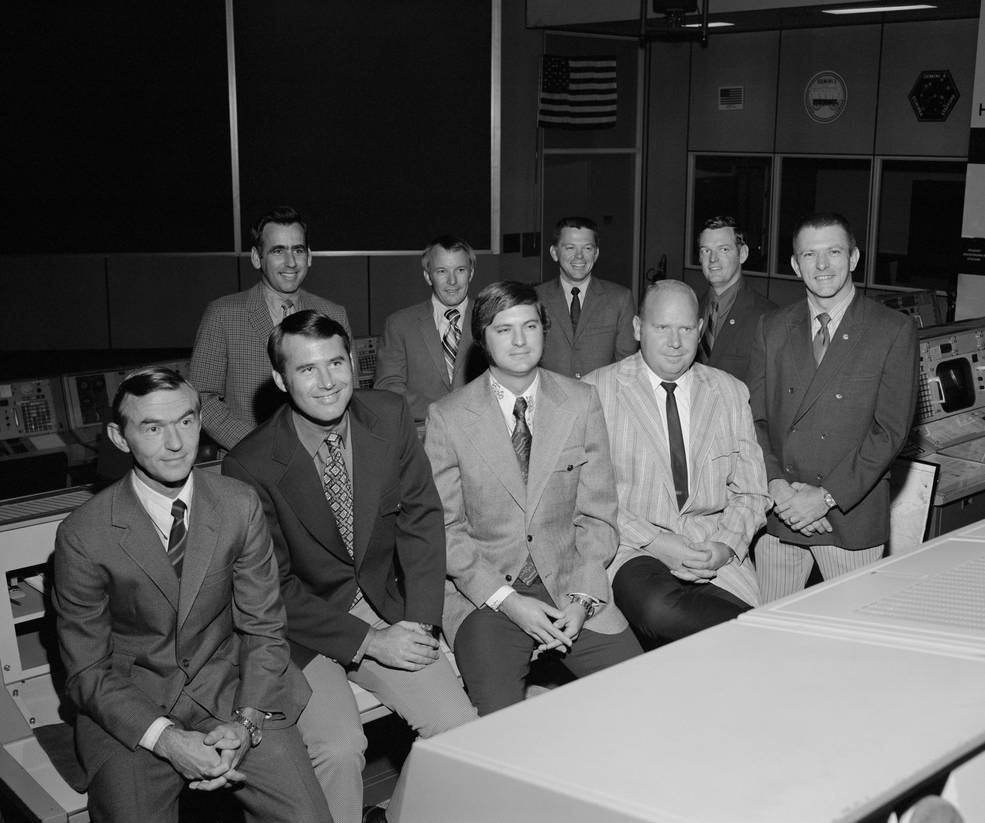
Left: Future Skylab astronaut Joseph P. Kerwin, left, taste testing proposed food and drink
items for Skylab, as fellow astronaut William R. Pogue looks on. Right: Posing in the
Mission Operations Control Room at the Manned Spacecraft Center, now NASA’s
Johnson Space Center in Houston, are four deputy flight directors named for the
Skylab program — seated in the front row Charles R. Lewis, left, Donald R. Puddy,
Neil B. Hutchinson, and Philip C. Shaffer. Also in the photograph are Chief of the
Flight Control Division Eugene F. Kranz, far right and in the back row Flight Directors
Milton L. Windler, left, Gerald D. Griffin, M.P. “Pete” Frank, and Glynn S. Lunney.
In late September 1971, several potential Skylab astronauts joined program managers and MSC’s Chief of Food and Nutrition Malcolm C. Smith in taste testing food items being considered for the long-duration missions. Among the astronauts present were Joseph P. Kerwin, William R. Pogue, Karol J. Bobko, Robert L. Crippen, and Bruce McCandless. On Nov. 23, 1971, to provide the needed support in the Mission Control Center for the long-duration Skylab missions, NASA selected four deputy flight directors — Charles R. Lewis, Donald R. Puddy, Neil B. Hutchinson, and Philip C. Shaffer. To prepare them for their duties in supporting Skylab, Shaffer and Puddy were assigned as flight directors for Apollo 16 and Hutchinson and Lewis for Apollo 17.
To be continued…
World events in October 1971
October 1 – Walt Disney World opens in Orlando, Florida
October 7 – The film “The French Connection” premieres
October 8 – John Lennon releases “Imagine”
October 12 – The musical “Jesus Christ Superstar” opens in New York
October 24 – Texas Stadium opens in Irving, Texas; the Dallas Cowboys beat the New England Patriots 44-21
October 25 – The United Nations votes to admit The People’s Republic of China, replacing the Taiwan-based Republic of China
October 28 – The United Kingdom becomes the sixth nation to orbit a satellite with the launch of Prospero



























